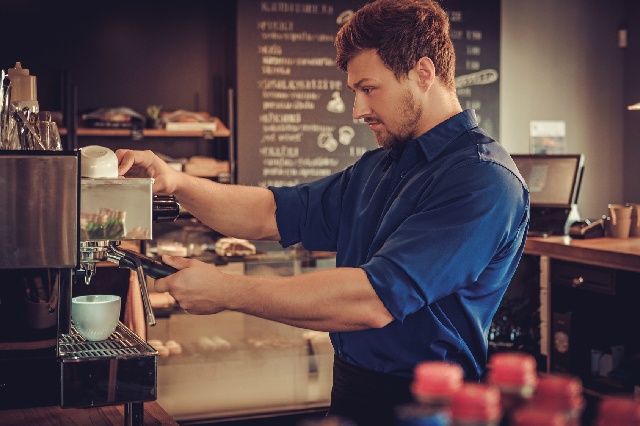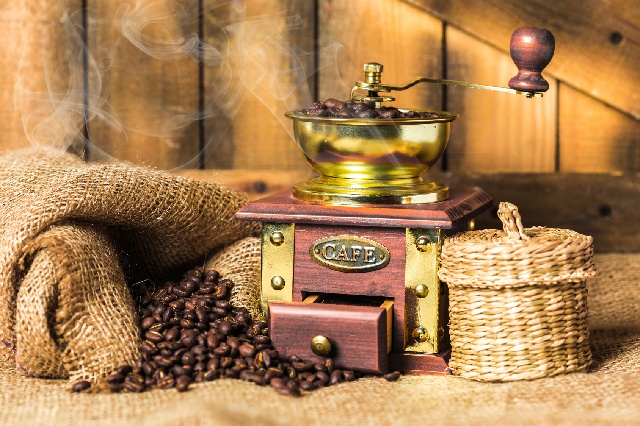Different roasting degrees of coffee beans changes in acidity and bitterness which roasted coffee should be chosen
For professional baristas, please follow the coffee workshop (Wechat official account cafe_style)

The bitterness of coffee varies with the degree of roasting. Of course, the original characteristics of coffee beans are also involved, but to some extent can be controlled by roasting. Let's take a look at the "bitterness" of coffee beans according to the degree of roasting.
At first, coffee was "not bitter."
The coffee beans we usually see are roasted coffee beans. The brown and fragrant aroma is due to roasting heating, the original "coffee bean" coffee does not have such color / fragrance.
The beans are green and white before baking, and they don't feel bitter at this stage of raw beans.
Change the taste by baking

As coffee beans grow "ruddy", "sour taste" is born and gradually becomes bitter. There are eight steps in roasting, each of which has a different sour and bitter taste. The heaviest baking degree of acid is shallow baking, so you can enjoy a more refreshing taste.
On the other hand, if you want to enjoy the bitterness of coffee, bake it intensively. The deeper the roast, the stronger the bitterness.
"Light Baking-Cinnamon" has no bitter taste.
Shallow baking, stop baking immediately after the process of reducing moisture called "steaming" is carried out before the full baking begins. At this stage, without the rich features of coffee, and because the color is very thin, you can think, "is coffee real?"
Even in the cinnamon roasting stage, the bitterness is only slight, and the sour taste accounts for most of the taste. The impression of "freshness" is strong, as the progress of baking bitterness is still weak. In China, it is not widely used, and there are many cases in Nordic coffee shops.
The sour taste is mainly "medium shallow baking ~ moderate baking".
In the medium baking, although a little bitter, but mainly sour taste. Because it is often used in American coffee, so this is an American fresh image.
Moderate roasting, which is considered to be the most frequent in coffee bean roasting, is the stage when the bitter taste begins to balance. The acidity also keeps enough, but because it is really bitter.

Medium and deep baking
Moderate roasting is a general baking condition that can be applied to the bitter and sour taste of many coffee beans that is balanced. With a good balance, you can feel strong "sour beans if acidity" and "rich, if strong bitter beans".
When it comes to deep baking, bitterness must be increasing, and the ratio of acidity to bitterness is the opposite. You can feel a firm aroma and enjoy it as a bitter coffee.
French baking
When you enter the French baking stage, you can distinguish between the stages called deep baking. There is almost no sour taste, and the bitter taste has been transformed into a comprehensive and prominent coffee flavor. By further promoting baking and making it Italian baking, you can no longer feel acidity.
Bitter tastes such as coffee, use and iced coffee are the main roasting conditions and can enjoy rich bitter and smoky flavors.
A change in bitterness due to baking conclusions.
The bitterness that can hardly be felt in the light baking state will become stronger by pushing the roasting. From the beginning of the city barbecue, I began to feel a bitter bitterness, when it comes to the whole city barbecue, bitterness reverses acidity. If you want to taste the bitter taste, you can enjoy the deep bitterness by making coffee with coffee beans after fully roasting in the city.
Important Notice :
前街咖啡 FrontStreet Coffee has moved to new addredd:
FrontStreet Coffee Address: 315,Donghua East Road,GuangZhou
Tel:020 38364473
- Prev

Hawaiian Kona Coffee planting Culture introduces why Kona Coffee is getting less and less.
Let's take a look at the coffee industry in Hawaii. This is the famous Kona coffee in Hawaii, but what is its origin? Spanish coffee transplant in the first half of 1800, coffee was transported to Hawaii. It is believed that Spaniards grow coffee trees on the island of Kauai, but their true intentions are uncertain. They try to build their own coffee species through immigration.
- Next

Careful selection and unique policy support for Costa Rican coffee cultivation
For the exchange of professional baristas, please follow the coffee workshop (Wechat official account cafe_style) Costa Rica Coffee Culture and economy introduction after independence Costa Rica became independent from colonial rule in 1821. In order to achieve economic independence, they focus on cultivating coffee. In San Jose, Costa Rica's largest city, the state gives residents land and coffee saplings and promotes
Related
- Beginners will see the "Coffee pull flower" guide!
- What is the difference between ice blog purified milk and ordinary milk coffee?
- Why is the Philippines the largest producer of crops in Liberia?
- For coffee extraction, should the fine powder be retained?
- How does extracted espresso fill pressed powder? How much strength does it take to press the powder?
- How to make jasmine cold extract coffee? Is the jasmine + latte good?
- Will this little toy really make the coffee taste better? How does Lily Drip affect coffee extraction?
- Will the action of slapping the filter cup also affect coffee extraction?
- What's the difference between powder-to-water ratio and powder-to-liquid ratio?
- What is the Ethiopian local species? What does it have to do with Heirloom native species?

